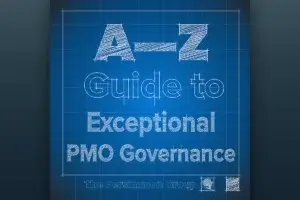Eddie Rickenbacker, the American World War I fighter ace and Medal of Honor recipient, said, “I can give you a six-word formula for success: ‘Think things through – then follow through.’ Research is finding that Captain Rickenbacker was right.
A recent study discovered a strong, positive relation between leaders’ strategic thinking and organizational success. So significant were the findings that the researchers concluded that “strategic thinking can be considered as an essential core towards the development and the sustaining of competitive advantage among organizations”. [1] They further found strategic thinking helped organizations reliably forecast the future business environment and as such, reduced the problems associated with uncertainty in organizational decisions. Strategic thinking, as an internal factor, was also found to affect the development of organizational planning and positively affected company changes, improvements, and outcomes.
What is strategic thinking and how do leaders use it to successfully navigate their organizations through a continually changing business landscape?
It begins with composing an effective plan in line with organizational objectives within a particular economic situation. Next strategic actions are put into place to meet the intended organizational objectives. But beyond simple planning and action-taking, strategic thinking requires leaders to think beyond routine procedures in order to concentrate on intended long-term strategic business purposes and objectives. Strategic thinking emphasizes a synthesis of current information and then combining analytic thinking, intuition, and creativity to initiate innovative, calculated changes in activities and procedures that meet new objectives in a changing business climate. In other words, strategic thinking is a continual process of thinking about an organization and how to develop a strategy which includes vision, creativity, flexibility, and entrepreneurial approach. [2] This effort most often results in the embodiment of a new and very different future for an organization, which may lead to a redefinition of the principal strategies or even environment in which the company operates. Think Apple Computer, now Apple, Inc.
In fiercely competitive business environments, organizations need their leaders to be skillful strategists. Strategic thinking leaders fully embrace Einstein’s conviction that “the definition of insanity is doing the same thing over and over again, but expecting different results.” Future success in highly competitive business environments demands doing things differently tomorrow than they are done today—and that requires leaders to think strategically.

He is the author of six books including the award-winning, 5 Steps to Expert: How to Go from Business Novice to Elite Performer.
References:
- Nuntamanop, P., Kauranen, I., & Igel, B. (2013). A new model of strategic thinking competency. Journal of Strategy and Management, 6(3), 242-246.
- Salamzadeh, Y., Bidaki, V. Z., & Vahidi, T. (2018). Strategic Thinking and Organizational Success: Perceptions from Management Graduates and Students. Global Business & Management Research, 10(4), 1–19.











